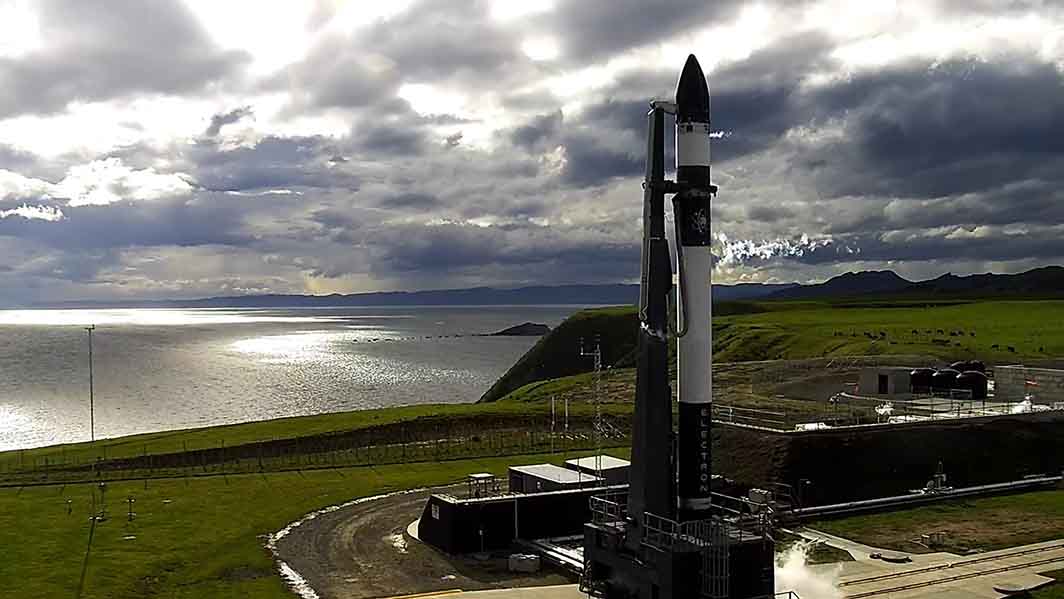
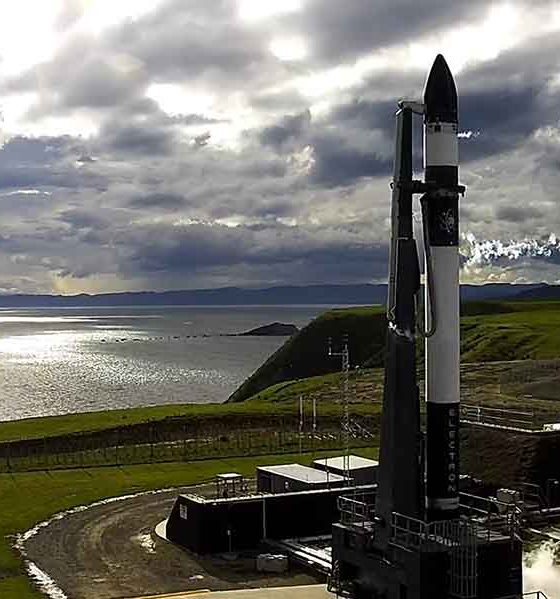
News
Rocket Lab “In Focus” mission ready to launch after scrubbed first attempt
On Wednesday, October 21, Rocket Lab held a launch countdown ahead of the fifteenth mission of its small rocket, Electron. The mission nicknamed “In Focus,” was slated to take off from the company’s primary launch pad at Launch Complex 1 on the Mahia Peninsula in New Zealand. Ultimately, the launch attempt was scrubbed due to an off-nominal oxygen sensor.
Rocket Lab did not immediately disclose a new targeted launch date, but did state that the launch window for the “In Focus” mission extended for nearly two-weeks. Rocket Lab founder and chief executive officer, Peter Beck, said in a Twitter post that, “the team’s taking the time to make sure it’s just the sensor and nothing else.” Beck also stated that weather moving into the area could pose a challenge for finding a new acceptable launch date.
Just two days later, Rocket Lab announced that a second launch attempt of the rideshare mission supporting ten Earth-observation satellites would occur at 5:14pm EDT (21:14 UTC) Wednesday, October 28. Should the second attempt be thwarted by uncooperative weather, daily opportunities to launch Electron are available until November 3.
What’s on board:
The fifteenth overall flight of Electron and fifth mission of 2020, is a rideshare mission that supports payloads for Canon Electronics Inc. and Earth-imaging services provider Planet. The payload, carefully mounted on the Rocket Lab Electron Kick Stage, consists of one nine SuperDove Flock 4e Planet microsatellites inside of Rocket Lab’s protective Maxwell payload dispensers. The entire stack is topped by Canon Electronics Inc.’s CE-SAT-IIB satellite procured by mission management provider Spaceflight Inc. All ten payloads are securely fixed atop the Electron Kick Stage.
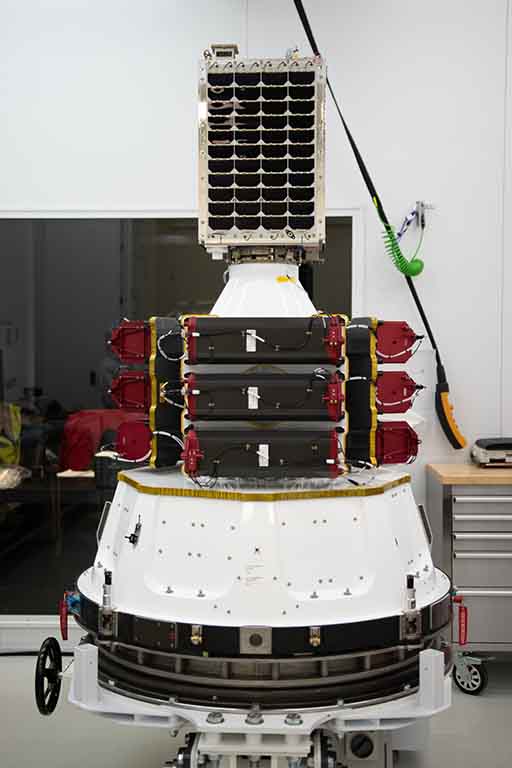
The Electron Kick Stage – a capable extra stage on Electron – is designed to circularize orbits and deploy multiple payloads to independent and precise destinations. The Kick Stage is powered by a small, but powerful Curie engine. All ten of the satellite payloads aboard the “In Focus” mission are expected to be delivered to a 500km morning-crossing Sun Synchronous Orbit.
Prior to flight, the payload was encapsulated inside of the Electron’s protective payload fairing. In traditional fashion, Rocket Lab outfitted the fairing with the mission patch artwork created specifically for Electron’s fifteenth “In Focus” mission.
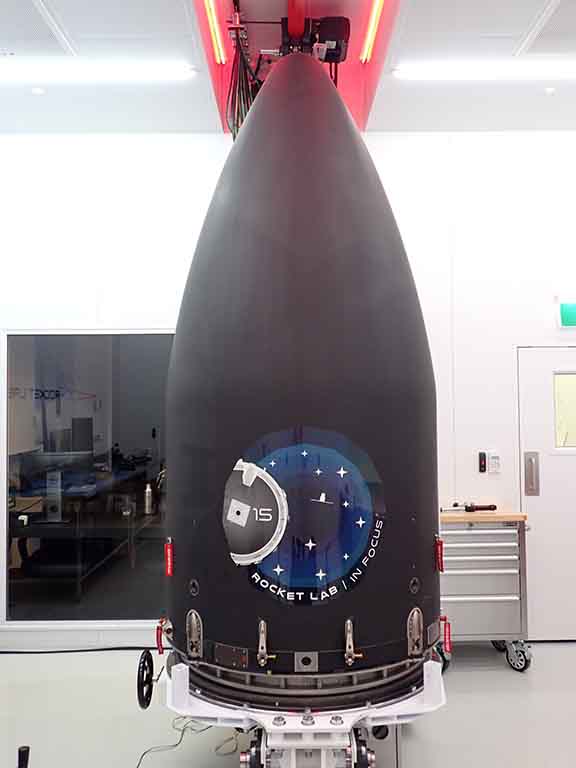
After encapsulation inside the fairing, the payload was integrated with the Electron first-stage booster. After a short trip from the assembly facility, Electron was raised vertically at Launch Complex 1 to complete a successful wet dress rehearsal – a standard pre-flight run-through of all launch procedures. The purpose of the wet dress rehearsal is to run through all of the launch day procedures including filling the rocket with RP-1 – a rocket grade kerosene – and liquid oxygen.
Launch teams conducted the practice launch on Thursday, October 8 proceeding through all countdown milestones right up until T-0 and engine ignition. This process ensures that the vehicle and launch teams are ready for flight. It also provides an opportunity to catch and address any anomalies that may arise prior to launch day.
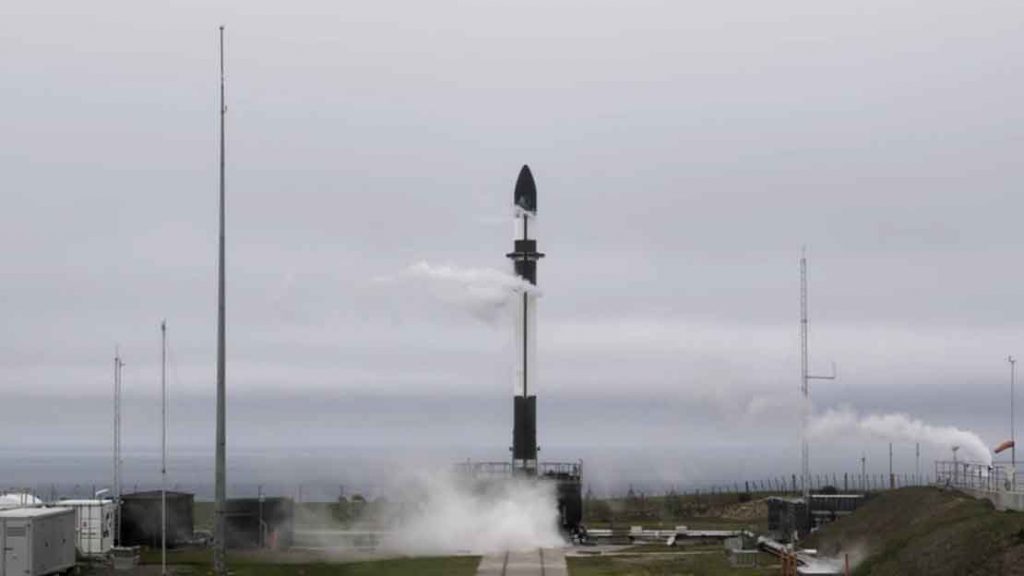
What to expect on launch day:
Approximately four hours ahead of the launch attempt Rocket Lab will once again return Electron to vertical launching position at Launch Complex 1 in New Zealand. In the time prior to the fueling of the rocket, safety checks of the launch complex will be conducted and marine hazard zones and airspace will be closed and secured to all traffic. Fueling of the rocket will begin just two hours ahead of the launch attempt.
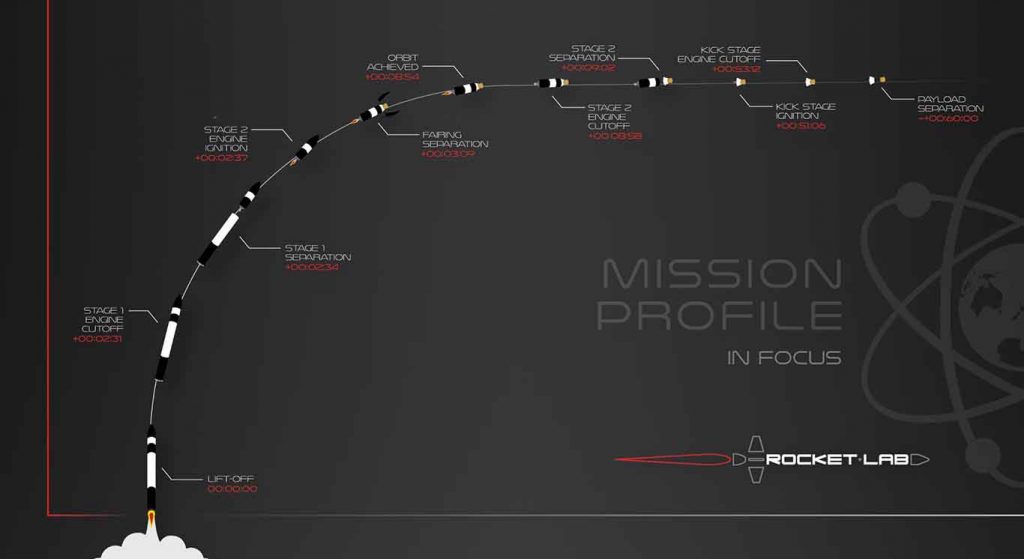
At T-0 Electron will be propelled to space by nine 3D-printed Rutherford electro-turbopump engines. Approximately 2 minutes and 34 seconds after liftoff Electron’s first stage will separate while the second stage engine ignites. Unique to the Electron, a “hot swap” of the batteries powering the electro-turbopump of the second stage will be performed – swapping out the power source of expelled batteries with new ones – at 6 minutes and 32 seconds after liftoff. The second stage is expected to arrive at an initial parking orbit approximately 8 minutes and 54 seconds after liftoff.
A brief ten seconds later the Kick Stage will separate from the second stage. Approximately 51 minutes and 06 seconds after liftoff the Kick Stage’s Curie engine will ignite to propel the payloads to their final circular Sun-Synchronous Orbits. Payload deployment is expected at the 60-minute mark after liftoff.
Rocket Lab will provide a live hosted webcast of the second launch attempt of the “In Focus” mission on Wednesday, October 28 on the company’s YouTube channel approximately fifteen minutes before liftoff. Should a scrub occur, Rocket Lab will announce a new targeted launch date on the company’s social media channels.

Elon Musk
Tesla AI Head says future FSD feature has already partially shipped

Tesla’s Head of AI, Ashok Elluswamy, says that something that was expected with version 14.3 of the company’s Full Self-Driving platform has already partially shipped with the current build of version 14.2.
Tesla and CEO Elon Musk have teased on several occasions that reasoning will be a big piece of future Full Self-Driving builds, helping bring forth the “sentient” narrative that the company has pushed for these more advanced FSD versions.
Back in October on the Q3 Earnings Call, Musk said:
“With reasoning, it’s literally going to think about which parking spot to pick. It’ll drop you off at the entrance of the store, then go find a parking spot. It’s going to spot empty spots much better than a human. It’s going to use reasoning to solve things.”
Musk said in the same month:
“By v14.3, your car will feel like it is sentient.”
Amazingly, Tesla Full Self-Driving v14.2.2.2, which is the most recent iteration released, is very close to this sentient feeling. However, there are more things that need to be improved, and logic appears to be in the future plans to help with decision-making in general, alongside other refinements and features.
On Thursday evening, Elluswamy revealed that some of the reasoning features have already been rolled out, confirming that it has been added to navigation route changes during construction, as well as with parking options.
He added that “more and more reasoning will ship in Q1.”
🚨 Tesla’s Ashok Elluswamy reveals Nav decisions when encountering construction and parking options contain “some elements of reasoning”
More uses of reasoning will be shipped later this quarter, a big tidbit of info as we wait v14.3 https://t.co/jty8llgsKM
— TESLARATI (@Teslarati) January 9, 2026
Interestingly, parking improvements were hinted at being added in the initial rollout of v14.2 several months ago. These had not rolled out to vehicles quite yet, as they were listed under the future improvements portion of the release notes, but it appears things have already started to make their way to cars in a limited fashion.
Tesla Full Self-Driving v14.2 – Full Review, the Good and the Bad
As reasoning is more involved in more of the Full Self-Driving suite, it is likely we will see cars make better decisions in terms of routing and navigation, which is a big complaint of many owners (including me).
Additionally, the operation as a whole should be smoother and more comfortable to owners, which is hard to believe considering how good it is already. Nevertheless, there are absolutely improvements that need to be made before Tesla can introduce completely unsupervised FSD.
Elon Musk
Tesla’s Elon Musk: 10 billion miles needed for safe Unsupervised FSD
As per the CEO, roughly 10 billion miles of training data are required due to reality’s “super long tail of complexity.”

Tesla CEO Elon Musk has provided an updated estimate for the training data needed to achieve truly safe unsupervised Full Self-Driving (FSD).
As per the CEO, roughly 10 billion miles of training data are required due to reality’s “super long tail of complexity.”
10 billion miles of training data
Musk comment came as a reply to Apple and Rivian alum Paul Beisel, who posted an analysis on X about the gap between tech demonstrations and real-world products. In his post, Beisel highlighted Tesla’s data-driven lead in autonomy, and he also argued that it would not be easy for rivals to become a legitimate competitor to FSD quickly.
“The notion that someone can ‘catch up’ to this problem primarily through simulation and limited on-road exposure strikes me as deeply naive. This is not a demo problem. It is a scale, data, and iteration problem— and Tesla is already far, far down that road while others are just getting started,” Beisel wrote.
Musk responded to Beisel’s post, stating that “Roughly 10 billion miles of training data is needed to achieve safe unsupervised self-driving. Reality has a super long tail of complexity.” This is quite interesting considering that in his Master Plan Part Deux, Elon Musk estimated that worldwide regulatory approval for autonomous driving would require around 6 billion miles.
FSD’s total training miles
As 2025 came to a close, Tesla community members observed that FSD was already nearing 7 billion miles driven, with over 2.5 billion miles being from inner city roads. The 7-billion-mile mark was passed just a few days later. This suggests that Tesla is likely the company today with the most training data for its autonomous driving program.
The difficulties of achieving autonomy were referenced by Elon Musk recently, when he commented on Nvidia’s Alpamayo program. As per Musk, “they will find that it’s easy to get to 99% and then super hard to solve the long tail of the distribution.” These sentiments were echoed by Tesla VP for AI software Ashok Elluswamy, who also noted on X that “the long tail is sooo long, that most people can’t grasp it.”
News
Tesla earns top honors at MotorTrend’s SDV Innovator Awards
MotorTrend’s SDV Awards were presented during CES 2026 in Las Vegas.

Tesla emerged as one of the most recognized automakers at MotorTrend’s 2026 Software-Defined Vehicle (SDV) Innovator Awards.
As could be seen in a press release from the publication, two key Tesla employees were honored for their work on AI, autonomy, and vehicle software. MotorTrend’s SDV Awards were presented during CES 2026 in Las Vegas.
Tesla leaders and engineers recognized
The fourth annual SDV Innovator Awards celebrate pioneers and experts who are pushing the automotive industry deeper into software-driven development. Among the most notable honorees for this year was Ashok Elluswamy, Tesla’s Vice President of AI Software, who received a Pioneer Award for his role in advancing artificial intelligence and autonomy across the company’s vehicle lineup.
Tesla also secured recognition in the Expert category, with Lawson Fulton, a staff Autopilot machine learning engineer, honored for his contributions to Tesla’s driver-assistance and autonomous systems.
Tesla’s software-first strategy
While automakers like General Motors, Ford, and Rivian also received recognition, Tesla’s multiple awards stood out given the company’s outsized role in popularizing software-defined vehicles over the past decade. From frequent OTA updates to its data-driven approach to autonomy, Tesla has consistently treated vehicles as evolving software platforms rather than static products.
This has made Tesla’s vehicles very unique in their respective sectors, as they are arguably the only cars that objectively get better over time. This is especially true for vehicles that are loaded with the company’s Full Self-Driving system, which are getting progressively more intelligent and autonomous over time. The majority of Tesla’s updates to its vehicles are free as well, which is very much appreciated by customers worldwide.









